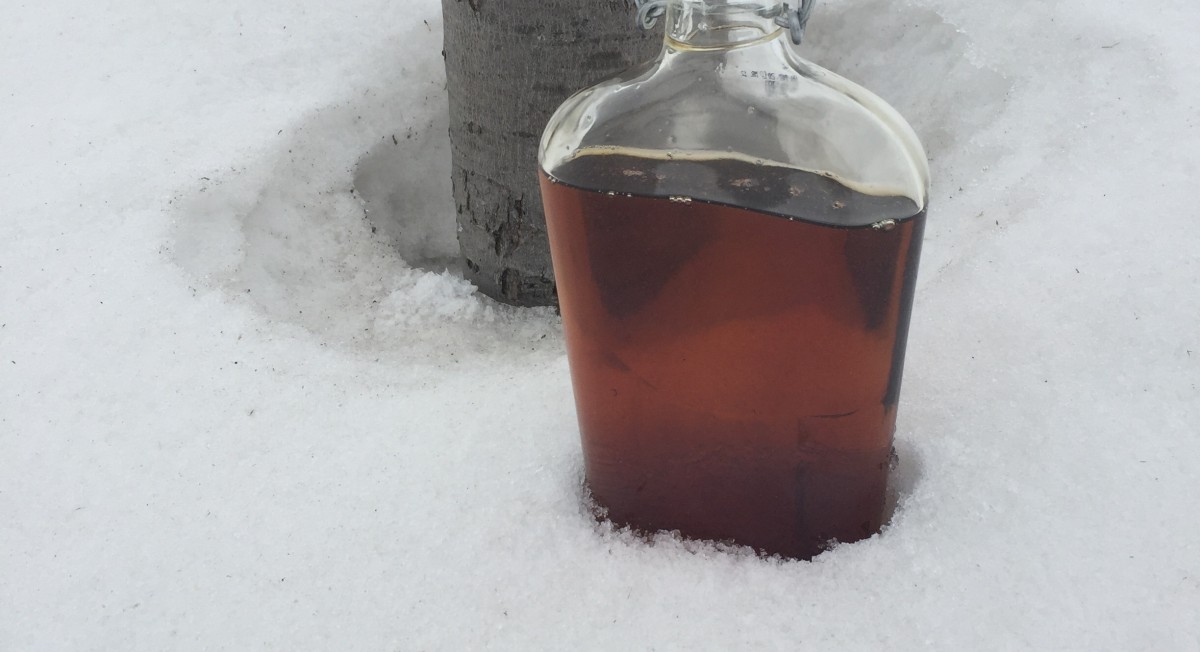Maple syrup season is upon us once again in eastern Canada. This exciting time of year brings us maple sap, which is turned into the ever-popular syrup. This unique process is a labour of love and a true test of skill, which makes maple syrup production a fine art. Here is everything you must know about maple syrup.
Maple syrup is a non-timber forest product produced in Manitoba, Ontario, Quebec, New Brunswick and Prince Edward Island, with the season running from late winter (the end of February) to early spring (mid to late April).
In our cold winter climate, the maple tree produces starch in its trunk and roots. In late winter, as the temperature rises, enzymes in the tree turn the starch into sugar-producing sap. This sap rises from the roots and is ready to be tapped in early spring while the tree is still dormant.
The maple trees are ready to tap as the temperature warms and reaches around 3 to 4 degrees above freezing. The producer drills a hole ½” wide and 2” deep in the trunk of the tree. They then attach a metal or plastic spout to the hole. Traditionally, a metal bucket was then placed under the spout to catch the sap and each bucket was emptied daily and taken to the processing area. Today, a plastic tubing system is set up, connecting all the trees to larger intake tubes and the sap is directly moved to the processing area.
Each maple tree measuring 8” in diameter is allowed to be tapped. Larger trees are allowed to be tapped up to a maximum of three times per season as to not affected the growth of the tree. When the producer drills the hole for the spout, they must be careful not to damage the bark of the tree, as this could cause the tree to become sick and eventually die.
Once the sap is collected it is put into storage tanks where is awaits the cooking or evaporation process. The sap or maple water that is extracted is 97.5% water and 2.5% sugar, thus it takes thirty-five liters of sap to make just one liter of maple syrup. The sap is turned into syrup through a boiling process. The liquid is brought up to the boiling point and stays there until 66% of the water is evaporated. There is no set cooking time to transform this liquid into a syrup, thus being an expert is everything! The producer watches the boiling liquid closely, testing it as is gets closer to the end product. Once the syrup is ready it passes through a filtration system to remove any impurities. Then the syrup is pasteurized in pressurized tanks. From there the syrup is filtered again through a three-part filtration system to ensure its clarity and 100% pure form. Then the syrup is finally ready to be bottled. The syrup is heated for the last time and placed in sterilized bottles, sealed and labelled. The bottles are then stored until they are shipped to the retailer.
All maple syrup in Canada must be graded through the Canada Food Inspection Agency. The syrup is classified by its color, ranging from extra light to dark. The syrup’s color classification is determined by the percentage of light transmission through the product.
Maple syrup is very low in saturated fats, cholesterol and sodium. It contains less calories than honey and is a good source of zinc, potassium and manganese.
Maple syrup should be stored in a cool, dark place before opening. Once opened, this natural syrup should be stored in the fridge or freezer.
Maple syrup is a natural product that is sweet and has a nice deep flavour to accompany many food items. My favourite ways to incorporate maple syrup are in soups, salad dressings, poultry dishes and desserts. I like to replace maple syrup for honey in baking recipes. Maple syrup is one of my absolute favourite ingredients to cook with. It is simple, I ♥ maple syrup!
***
Melissa Hryb is the chef at Marion Street Eatery, where she specializes in hearty comfort food with a twist.
Follow her on Twitter @MarionStreetEat or Instagram @MarionStreetEatery
